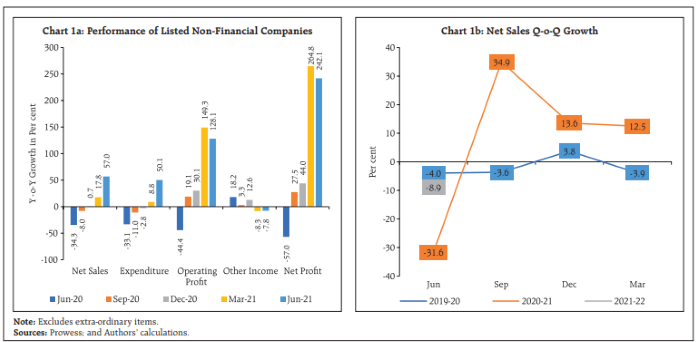
Indian economy on revival path: The last month and a half saw a revival in demand and the supply situation is improving post lockdown, says the State of the Economy Report, which is a part of the Reserve Bank of India’s July bulletin. The report points to a pick-up in manufacturing, reversal of contraction in services, and improvement in financial conditions on the back of comfortable liquidity conditions.
The RBI report is optimistic about the trajectory of Inflation, which, it says is past the peak in May-June. “So far, inflation is on track to staying within the trajectory envisaged and it is likely to stabilise during the rest of the year,” the report says. The central bank had raised its inflation projection from 5.1% to 5.7% in its August 6 monetary policy review. The monetary policy committee of the Reserve Bank had kept the policy rates unchanged and retained the accommodative stance.
READ I World may miss climate change targets; report calls for damage control
Indian economy may be back on growth path
Retail inflation measured by the Consumer Price Index slipped to 5.6% after hitting 6.3% in May and June. The latest estimate for India suggested that “for a 1 percentage point reduction in the rate of inflation, 1.5-2 percentage points of gross domestic product (GDP) growth have to be foregone,” says the report.
The liquidity position of Non-Banking Financial Companies had worsened after the COVID-19 outbreak as markets and banks pulled back. The Union government and the RBI introduced several schemes to improve liquidity to help NBFCs tide over the crisis. NBFCs that received funds through the Targeted Long-Term Repo Operations (TLTRO) improved their short-term liquidity situation.
READ I Fate of India’s Covid-hit aviation industry hangs in balance


A basic examination of operational financials of Small Finance Banks reveals high credit deposit ratios. SFBs are displaying healthy profitability, especially in recent quarters. Analysis of quarterly data from March 2017 to March 2020 reveal that the profitability of SFBs is determined by factors such as efficiency, leverage, liquidity and banking business.
The rural unemployment is declining, but surprisingly the number of households demanding work under the MGNREGA is also falling. This shows that the farm labour market is tightening as the sowing season gathers steam.
The report cites the vibrant financial markets as an example of Indian economy’s growth impulse. The current calendar year may become an Indian year of IPOs. Initial offerings by unlisted start-ups performed really well. Food delivery app Zomato’s IPO was oversubscribed 38 times, setting domestic stock markets on fire.
“A new era has clearly begun.” It is estimated that India has 100 unicorns, with 10 new ones created in 2019, 13 in 2020, 3 a month so far in 2021-22.
Indian economy has been facing an unemployment crisis. The Covid-19 pandemic has aggravated the situation. The NSO’s third annual survey (2019-20) shows that unemployment has hit a four-decade high to around 18%. The economy needs to grow at a fast rate to generate a large number of jobs for the country’s young population. So, the policy makers may be reluctant to act on high inflation as it would mean lower growth.
Anil Nair is Founder and Editor, Policy Circle.

